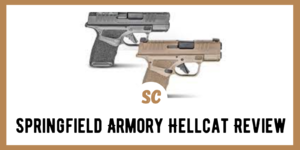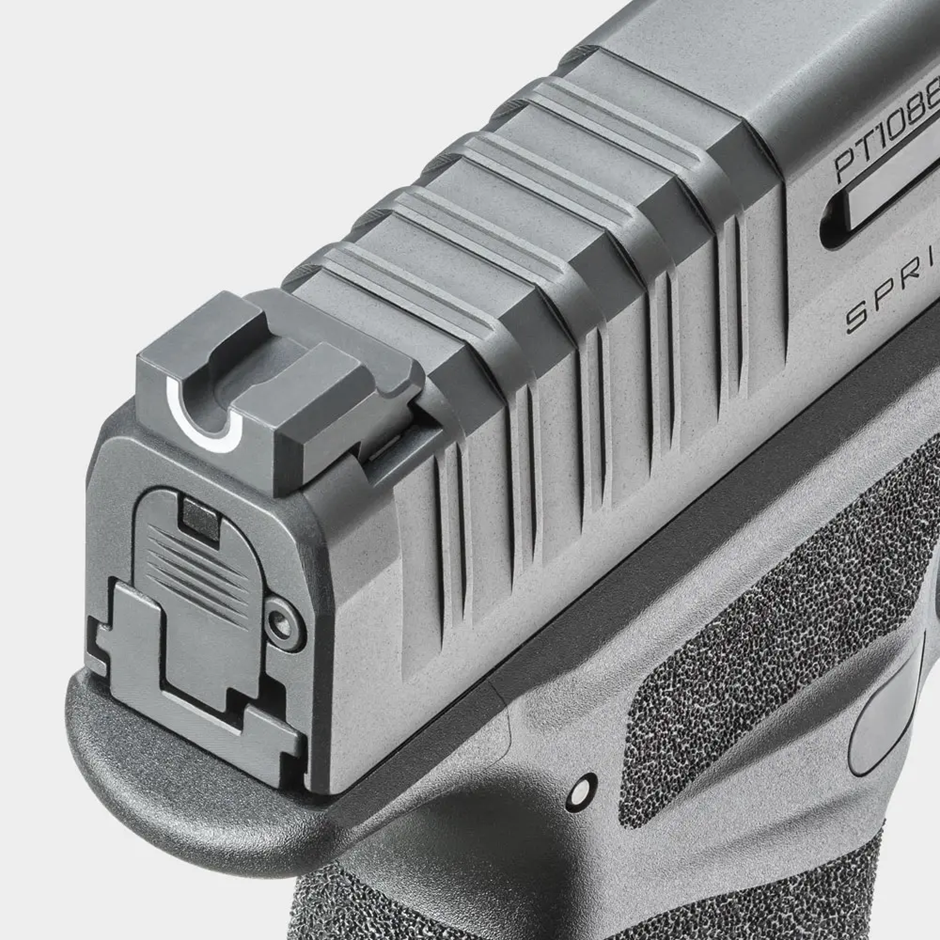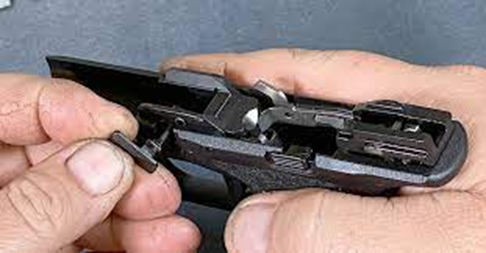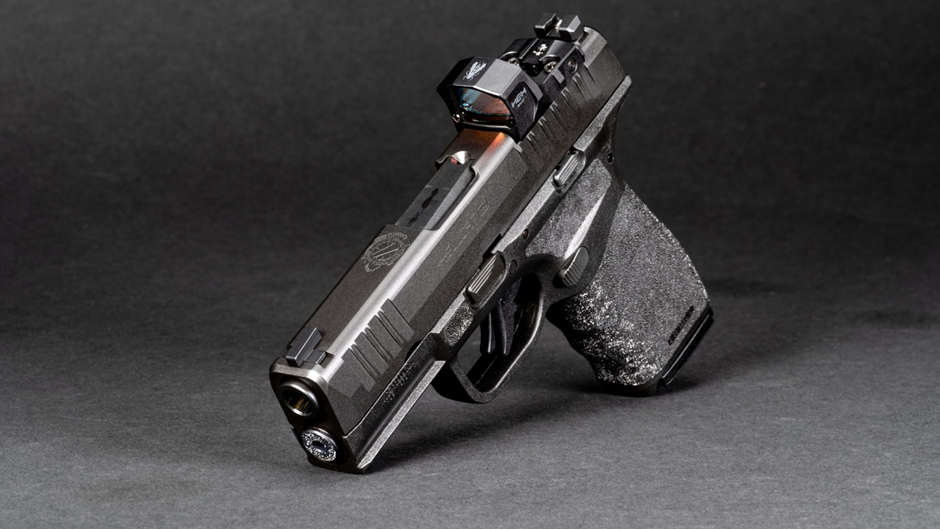For many years, finding a concealed carry pistol was a bit of a challenge. I carried a Springfield Armory pistol chambered in 40 caliber for many years. I must admit that it was bulky and often uncomfortable. Yet, I liked how it shot and was content to live with the weight and size.
Then, the concealed carry gun market seemed to explode, and many pistol manufacturers began what I termed the “Size Wars.”
Every major gun manufacturer started producing smaller and lighter concealed carry guns culminating in the many compact and micro-compact size guns we see today.
SKIP AHEAD
The Move to 9mm and Smaller Pistols
I must admit that I joined in the excitement and have been carrying a Glock 43 for several years. It is much more comfortable and easy to conceal than my old 40 S&W Springfield.
Now the trend seems to be reversing. Concealed carry guns are becoming slightly larger, and the magazine capacities are increasing again. My Glock 43’s one shortcoming is the 6-round magazine capacity. I have always carried extra mags because of this limiting round count.
Magazine Capacity is the New Trend
With many manufacturers doing anything they can to increase the magazine capacities of their compact and sub-compact pistols, it is no surprise that Springfield Armory has entered the market with the Springfield Hellcat. Springfield is following the market with a slightly larger pistol with a higher mag capacity than many of its rivals.
The Springfield Hellcat OSP Review
I have always liked Springfield armory products. As I said earlier, I carried a Springfield pistol as a concealed carry gun for many years. I was delighted to see Springfield Armory field the Hellcat pistol as a concealed carry option and have been anxious to put one to close examination.
Now I have my chance, so let’s dive into the Springfield Hellcat pistol review in earnest.
As usual, before we get into the meat and potatoes of my thoughts about this pistol, I like to take a look at the factory specifications and features. This provides a good springboard for comparing this pistol to others in the micro-compact and sub-compact categories:
Springfield Armory Hellcat Specifications
- Caliber – 9mm (9×19)
- Barrel Length – 3 inches
- Barrel Material – Forged Steel
- Barrel Finish – Melonite
- Twist Rate – 1:10
- Slide Material – Billet Machined Steel
- Slide Finish – Melonite
- Slide Optics Ready – Yes
- Frame Material – Polymer
- Recoil System – Dual Captive recoil spring with full-length guide rod
- Weight – 17.9 ounces with flush fit mag
- Overall Length – 6 inches
- Overall Height – 4 inches with flush fit mag
- Grip Width – 1 inch
- Grip Texture – Springfield armory Adaptive Grip Texture
- Front Sights – Tritium luminescent front sight
- Rear Sights – Tactical Rack U-Notch rear sight

Features
- Optics-ready slide cuts fit most pistol optical sights.
- Springfield Armory Adaptive grip texturing that holds tighter the more you squeeze the grip.
- Standard tritium illuminated front sight with a U-shaped rear sight that can be used to perform tactical slide racks if necessary.
- Micro-compact design that can provide up to 13+1 round capacity makes this the highest round count of any micro-compact pistol on the market.
Obviously, micro-compact pistol design has made some tremendous advances over the past few years. Let’s take a more in-depth look at the Springfield Armory Hellcat pistol and its components.
Hammer Forged Barrel
Like most other micro-compact pistols, there isn’t a lot of barrel to be seen. At 3 inches, there isn’t a lot of steel past the chamber. The barrel is hammer forged and features a 1:10 twist.
Obviously, this isn’t a pistol with which you will make long-distance accurate shots. However, at the ranges that most self-defense encounters occur, the Hellcat is as accurate as you could want, and probably more accurate than most of us can reasonably shoot.
The Slide
Springfield stepped up its game a notch with its factory slide. The slide is stainless steel and machined from a solid billet for the best tolerances. The slide serrations are unique and provide a secure grip for racking the slide or clearing malfunctions.
The slide serrations are positioned at the front and back of the slide to facilitate several different ways to manipulate the slide.
The crowning feature of the Springfield Hellcat OSP slide is the factory-ready optics slide deck that is factory standard. The notch is designed to fit several red dot micro sights without having to machine the slide or disturb the factory iron sights.
Including a visual and tactile loaded chamber indicator on the slide is another positive feature of this micro-compact pistol. I am not sure how important this is to the average concealed carry user, but for me, it is a feature I like to have, especially on a micro pistol that I intend to use as a carry gun.
The Factory Sights
While looking at the slide, the factory sights are a logical place to visit next.
Again, Springfield has upped the ante by including night sights as a standard feature on this pistol. The tritium front sight and the U-shaped rear sight make finding your sight picture easy and fast in the darkest conditions.
The Pistol Controls
The Springfield Hellcat is a striker-fired semi-automatic pistol with the usual and expected controls.
The first thing many shooters will notice is the lack of manual safety. The Hellcat has a striker disconnect on the trigger that replaces the manual safety. There is a factory option for manual safety on the frame, but I have not seen a Hellcat that is equipped with this option.
Magazine Release
Typical of Springfield pistols, the magazine release is located comfortably behind the trigger guard on the grip frame of the pistol. The magazine release can be swapped from the factory left-side position, which is normal for a right-handed shooter. This is a reversible mag release, and changing the mag release from left to right does require disassembling the pistol, but it isn’t a major job.
The magazines do drop free cleanly with one exception. When I use the extended magazine, My pinky has a tendency to hold the magazine in place, requiring me to make a conscious effort to move my finger to get the magazine to drop.
Slide Lock/Release
The Slide Lock/Release lever is located in the traditional location on the left side of the frame, centered on the pistol’s grip. This is a convenient location for right-handed shooters to manipulate the slide release with their strong hand thumb.
Unfortunately, the slide release is not reversible, so left-handed shooters must learn to operate the slide release differently.
On this note, I typically teach shooters to avoid using the slide release and make it a habit to grasp the slide in their weak hand and rack it fully to the rear and let it go to return to the battery position after a reload.
The Takedown Lever
Anyone familiar with the takedown procedures on many striker-fired pistols will feel right at home with the takedown lever on the Springfield Hellcat OSP.
The takedown lever is located on the left side of the frame immediately above the trigger. Locking the slide back and rotating the lever allows the slide to move forward and off the frame. Nothing fancy or innovative with this control on the Hellcat.
The Trigger
I consider the trigger on any pistol one of the controls and perhaps the most important of them all.
The trigger on the Springfield Hellcat has mixed reviews among handgun aficionados. Some like the feel of the trigger, and others find it either too stiff or too creepy. My opinion is that the trigger on the Hellcat is better than a lot of others, but could still use a bit of improvement.
The Hellcat Trigger Safety
The trigger includes a safety disconnect lever that disengages when the trigger is pulled. I much prefer a trigger lever than a hinged trigger for a safety disconnect on a striker-fired pistol, so this feature gets high marks in my book.
As far as the trigger pull, the Hellcat is middle of the road. There is a light pull at the beginning that gradually increases as your approach the breakpoint on the trigger. There is a slight amount of creep at the breakpoint, and then the pistol breaks cleanly and crisply. The break is a little stiff, but I feel like that is a positive thing for a self-defense pistol.
The Frame and Grips
Springfield has taken a step forward, in my opinion, with the frame and especially the grips on the Hellcat. The frame is stiff but light which adds greatly to the appeal of this small gun as a concealed carry weapon.
One problem with many small pistols for shooters with large hands is getting a functional grip on the firearm.
The grip texture on the Hellcat and the grip size make it easy for even those with large hands to control this little gun. I had no trouble maintaining a secure grip, even on a hot day in West Texas.
The Feel and Overall Impression of the Springfield Hellcat
My first impression when taking this Springfield Armory Hellcat is excellent. The pistol fit into my hand comfortably and without making a conscious effort to adjust my grip. It is unusual for micro pistols to conform to my grip and hand so well. This makes me think this micro pistol is a good candidate for me as an everyday carry firearm.
I have also been impressed with the fit and finish of this firearm. Springfield Armory has always had a reputation for manufacturing high-quality handguns. Springfield Armory has continued this tradition with the Springfield Hellcat.
What You Get in the Kit
Opening the basic kit reveals some interesting included features. The basic Springfield Armory Hellcat kit comes in a cardboard box rather than the traditional plastic case.
I don’t typically ever use the plastic cases, and they gather dust in the top of a closet until I finally decide to toss them in the trash.
Inside Its Own Packaging
Inside the box, you will find the pistol, two magazines, a standard flush fit magazine, and an extended magazine.
You get the standard printed material that comes with almost anything that you buy. You get some hex wrenches that fit the optics cover slide plate and, of course, the required lock. All in all, this is an impressive kit.
Options and Models
Springfield Armory offers a wide array of options and models of the Hellcat.
In all, Springfield Armory shows 16 different variations of the Hellcat on their website. Variations include versions with threaded barrels, optical sight pistol choices, some retailer exclusives, and the new Hellcat Pro package.
Aftermarket Accessory Options
Whichever variation you select, there are also a wide array of aftermarket products designed specifically for the Springfield Armory Hellcat line of pistols. Options for aftermarket accessories range from optical sights to extended mag release buttons. You can also purchase high-capacity magazines that can give you up to a 15-round capacity.
For more information about specific models and options available with the Springfield Armory Hellcat, you can click this link.
My Impressions from the Range of the Springfield Armory Hellcat
Let me say first that I am a fan of Springfield Armory Pistols. That may have colored my judgment just a little for this Springfield Hellcat review. Nonetheless, I will try to be as objective as possible.
Overall Impressions of the Springfield Armory Hellcat OSP
From the start, the Springfield Hellcat felt good in my hand, and that always starts a range session on a positive note. A gun that feels good in your hand is a confidence builder that leads to better shooting overall.
Loading and Charging the Springfield armory Hellcat
Loading the mags was typical. The mags fit well into the mag well of the Hellcat. The rear slide serrations make racking the slide and charging the chamber easy. I do believe that even the smallest shooter can manage to load and ready this pistol without problems.
The Factory Sights of the Springfield armory Hellcat
The factory sights are clear, though it did take me a few shots to get used to the U-shaped rear sight. My typical carry is a Glock 43, and I am used to seeing the typical Glock three-dot sight picture. However, I quickly figured it out and got on with the shooting.
Felt Recoil and Muzzle Flip of the Springfield Armory Hellcat
The felt recoil and muzzle flip of the Springfield Hellcat were not unexpected or surprising. Small micro-compact pistols are often a handful and can buck if you aren’t prepared for the sensations.
Honestly, I felt like this Springfield Hellcat was easier to hold and recover my sight picture than my Glock 43.
Feeding and Operation of the Springfield Armory Hellcat
My range testing of the Springfield Armory Hellcat involved firing approximately 200 rounds of various types and weights of ammunition. 100 rounds were factory ball 115 grain 9mm cartridges. I shot 25 rounds of critical defense ammunition, and the balance was JHP 115 grain to judge accuracy and feeding.
Range Operation Results
I experienced no feed problems, stoppages or failures to feed with any of the ammunition I chose. The Springfield Hellcat even fed a mixed magazine of ball ammunition, critical defense, and JHP rounds without any malfunctions.
I only used a single magazine for my testing and have no idea how many magazine tests I would need to find a problem.
Accuracy of the Springfield Armory Hellcat OSP
I shot the Springfield Armory Hellcat at 7, 15, and 25-yard standard silhouette targets. I must say upfront that most of the guns I own and shoot will perform much better on the range than my capabilities.
Better than the Tester
With that bit of truth in advertising out of the way, I can discuss my results and my findings. At 7 and 15 yards, the Springfield Armory Hellcat was a surprisingly easy small frame gun to shoot accurately. The Springfield Hellcat seems to point naturally, which makes accuracy much easier.
The Test Methods
I fired about 150 rounds on either the 7 or 15-yard range line. Of those 150 rounds, I could count the number of hits outside the 8 ring on one hand. Mind you. I didn’t do anything special like shoot weakhanded or single-handed. I used my standard two-hand grip and stance to get the best possible results.
The Test Results
At 25 yards, the results were a little more disappointing. I did manage to keep all of my shots on the black of the target, but the pattern was scattered. This could be a combination of things.
However, since I shot this last 25-yard batch at the end of my testing, I was a bit fatigued. I have no doubt that in the hands of someone younger, with better eyesight, and in better condition than me would do much better with the Springfield Armory Hellcat than I can.
My Final Thoughts on the Springfield armory Hellcat OSP
I am convinced that the Hellcat is as good an everyday carry pistol as you can choose. I like the look and feel of this gun, as well as the magazine capacity and the way it shoots. The Hellcat OSP is a fine example of the latest design and materials technology in a package created for concealed carry. This is a great gun for experienced shooters or beginning license holders.
















